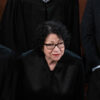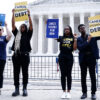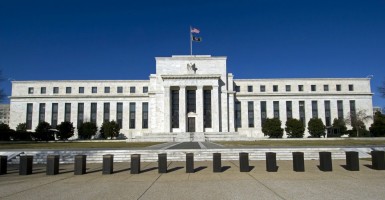Stocks tumbled in several major markets earlier this week because, supposedly, investors were nervous about this weeks Fed meeting. The Fed has flirted with raising its interest rate target for months now, but mixed economic news keeps giving them cold feet. When it does finally raise its target rate, it will be the first time in almost a decade the Fed has done so.
At this point, it seems most likely the Fed will not raise its target, largely because of jitters over China’s economy and the second quarter Gross Domestic Product (GDP) figures in the U.S. In August, more than 80 percent of the economists surveyed by the Wall Street Journal expected a higher target in September. But the latest survey shows this number has dropped to 46 percent. Rather than focus on the accuracy of these economists’ predictions, here’s three ideas policymakers should be concerned with as Congress returns from summer recess.
1. The Fed cannot simply make interest rates whatever it wants them to be.
In general, current interest rates reflect what people expect to earn on investments. In other words, if profit opportunities in the economy don’t proliferate, rates will not go up much, no matter what the Fed does.
By implication, if the Fed doesn’t expect rates to start increasing, they’re unlikely to raise the target federal funds rate because they don’t want to have to immediately lower it. That’s exactly what’s happened to more than a dozen central banks since the 2008 crisis – they raised their target rates and soon reversed course.
Rather than dealing with the possibility that maybe central banks can’t simply “increase interest rates,” many assume the higher rates caused an economic slowdown in these countries.
2. Central Banks Need Operating Rules.
In the long-run, the U.S. will have better monetary policy – and better money – if the Fed operates in a rules-based world. In the absence of such a rules-based framework, the Fed has gone well beyond what is required to conduct monetary policy.
It’s even a stretch to call some of its actions monetary policy.
Furthermore, Dodd-Frank has expanded the Fed’s role as a regulator and left Fed with the authority to conduct much of the emergency lending it did in the wake of the 2008 crisis.
The Fed’s discount window and emergency loans have become a stealthy way for the government to prop up failing institutions, and neither is necessary to conduct monetary policy.
3. Private Innovations in Money Should be Allowed to Flourish.
The privately produced digital currency bitcoin is just one example of a market innovation which allows people to choose their own mediums of exchange.
It is hard to imagine Bitcoin – or any privately produced currency – replacing an established national currency if the central bank acts as even a moderately good steward of the national money.
There is no reason to prevent this added check on a central banks’ behavior: monetary policy is likely to be worse when shielded from competition, and better when competing against alternative monies.





























